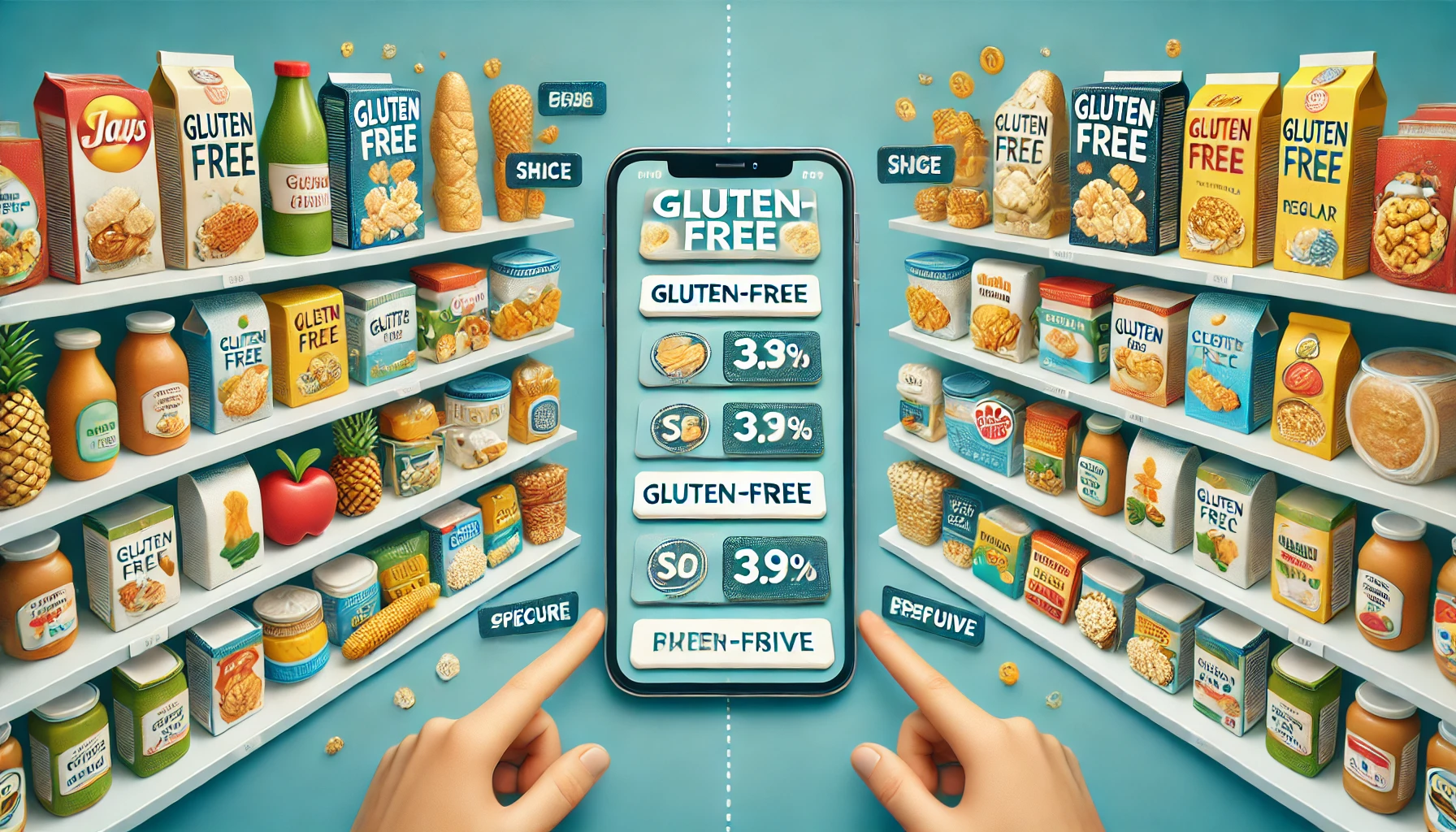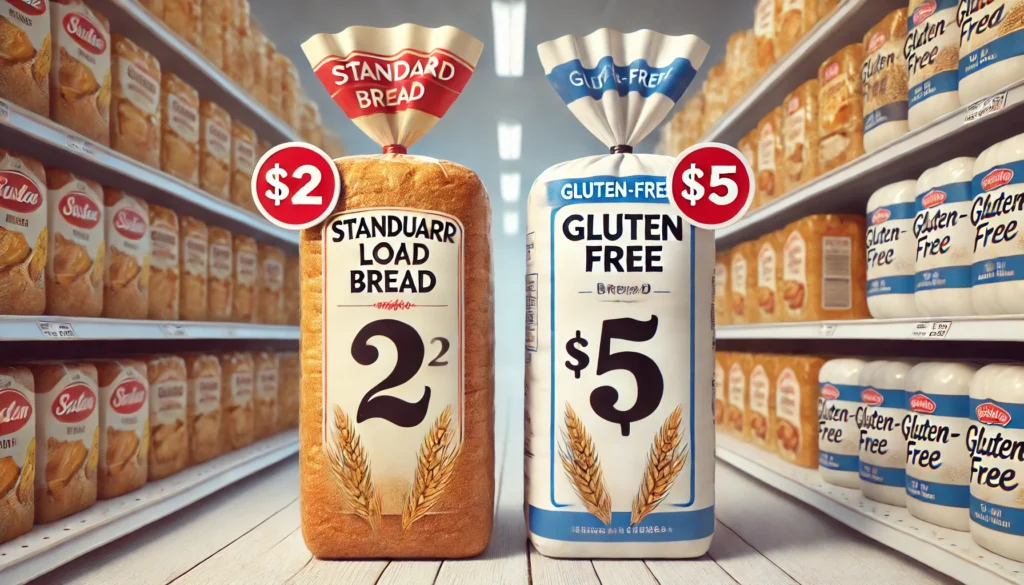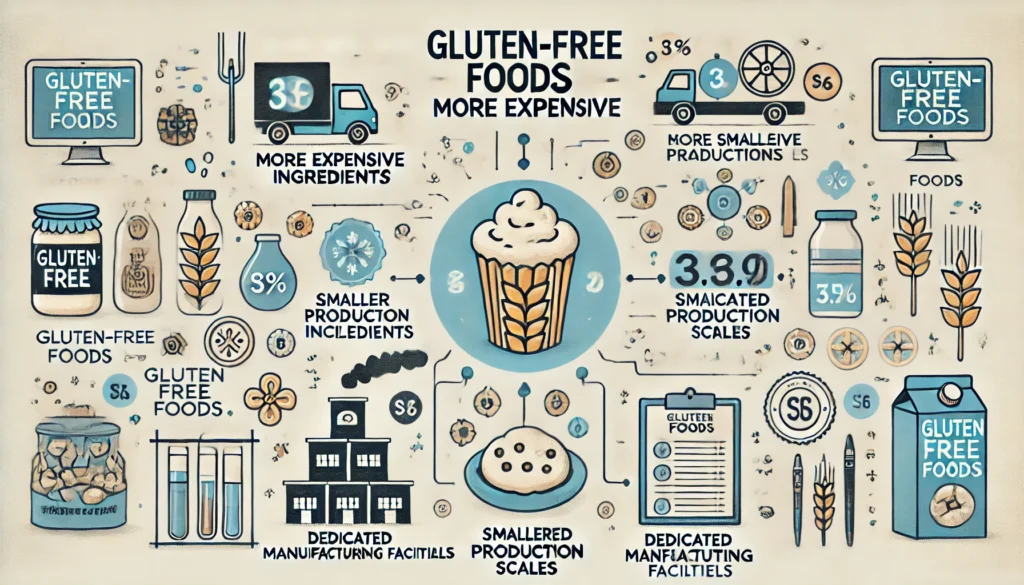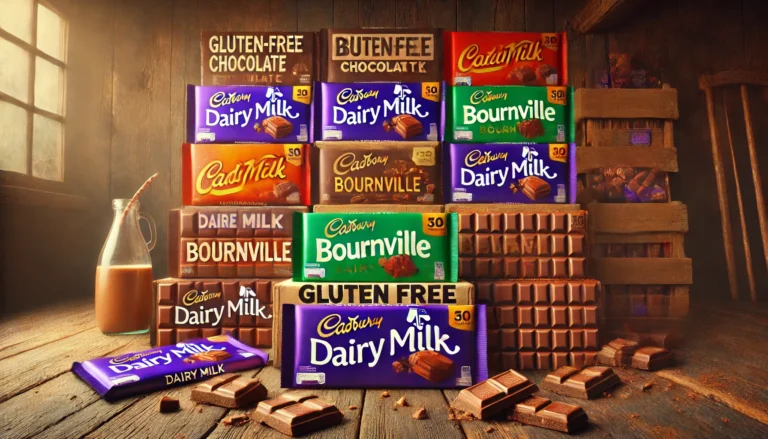
If you’ve ever wandered the aisles of your local supermarket, you may have noticed a peculiar trend: gluten-free products often come with a much heftier price tag compared to their gluten-filled counterparts. Whether it’s bread, pasta, or cereals, those little “gluten-free” labels can sometimes feel like a luxury tax. But why is this the case? Let’s dive into the numbers, the reasons, and the impact on consumers.
Why Is Gluten Free Food More Expensive?
Gluten-Free vs. Regular Food
The price difference between gluten-free and regular products can be staggering. According to Coeliac UK, gluten-free bread is on average 4.3 times more expensive than standard bread. Another study found that gluten-free foods cost, on average, 159% more than their conventional counterparts. To put it simply, those avoiding gluten are paying a significant premium.
A comparison of 56 gluten-free products with regular versions showed that gluten-free items were 242% more expensive on average. Specific categories saw even higher discrepancies: gluten-free cereals were 205% more expensive, and gluten-free bread and bakery products were a whopping 267% more costly.

For instance, at Coles, a standard white sandwich loaf costs A$2.40 (A$0.37 per 100g), while the cheapest gluten-free option is A$5.70 (A$1.14 per 100g) – over three times as much. Similarly, gluten-free flour can be around twice as expensive as regular flour. These examples highlight the substantial price disparity faced by those adhering to a gluten-free diet.
Why Is Gluten-Free Food So Expensive?
Several factors contribute to the high cost of gluten-free products. It’s not just about slapping on a “gluten-free” label – the production and distribution of these foods are inherently more costly for several reasons:
- More Expensive Ingredients: Gluten-free products often require specialized flours and binding agents like xanthan gum or guar gum, which cost more than standard wheat flour. These ingredients are not only pricier but also harder to source.
- Smaller Production Scales: Gluten-free foods are produced in smaller quantities compared to conventional products. This means manufacturers cannot benefit from the same economies of scale, leading to higher costs per unit.
- Dedicated Manufacturing Facilities: To avoid cross-contamination with gluten-containing products, gluten-free foods often need to be made in dedicated facilities. This requires separate equipment, stringent cleaning processes, and rigorous quality control measures, all of which add to the overall cost.
- Complex Recipes: Replicating the properties of gluten (which provides elasticity and structure) without using it can be challenging. Gluten-free recipes often involve a mix of different flours and additional ingredients to achieve a similar texture and taste, complicating the manufacturing process and increasing costs.
- Higher Quality Control and Testing Costs: Ensuring that products meet gluten-free standards involves extensive testing and quality control procedures. This is especially crucial for individuals with celiac disease, for whom even trace amounts of gluten can be harmful.
- Less Competition: The gluten-free market, though growing, still has fewer players compared to the conventional food market. This lack of competition can result in less price pressure and higher costs for consumers.
- Higher Transportation Costs: Due to smaller production scales and more specialized distribution channels, transportation and logistics costs for gluten-free products are often higher. This is especially true in regions where demand for such products is lower, leading to smaller and more expensive shipments.
Impact on Consumers
These high prices have a real impact on consumers. Research shows that 7 in 10 people find that shopping for gluten-free food adversely affects their quality of life. Almost 80% of individuals struggle to afford gluten-free products, and 4% of those with celiac disease report eating gluten despite the health risks due to cost concerns. For many, maintaining a gluten-free diet can add up to 35% more to their weekly food bill compared to a regular diet.
Market Growth and Future Trends

Despite the high costs, the gluten-free market has seen impressive growth. The UK “free-from” market grew by 133% over five years, reaching £837 million in 2018. This expansion reflects a broader trend of consumers becoming more health-conscious and seeking out specialty foods, whether for medical reasons or lifestyle choices.
As the market continues to grow, there is hope that increased competition and improved manufacturing processes will eventually drive down prices. For now, though, those who need or choose to eat gluten-free often find themselves paying a premium for their health and well-being.
Final Thoughts
While the cost of gluten-free food can seem unfairly high, understanding the factors behind these prices can offer some perspective. From the expensive ingredients to the rigorous quality control, producing gluten-free food involves unique challenges that go beyond a simple ingredient swap.
As awareness and demand continue to grow, we can hope that the market will evolve, making gluten-free products more accessible and affordable for everyone. Until then, consumers can explore various strategies, such as buying in bulk, looking for sales, or even trying their hand at homemade gluten-free recipes to ease the financial burden.
For those committed to a gluten-free lifestyle, navigating the supermarket can sometimes feel like a balancing act between health and expense. But with more people embracing gluten-free diets and the market expanding, the future looks promising – and potentially, more affordable.






